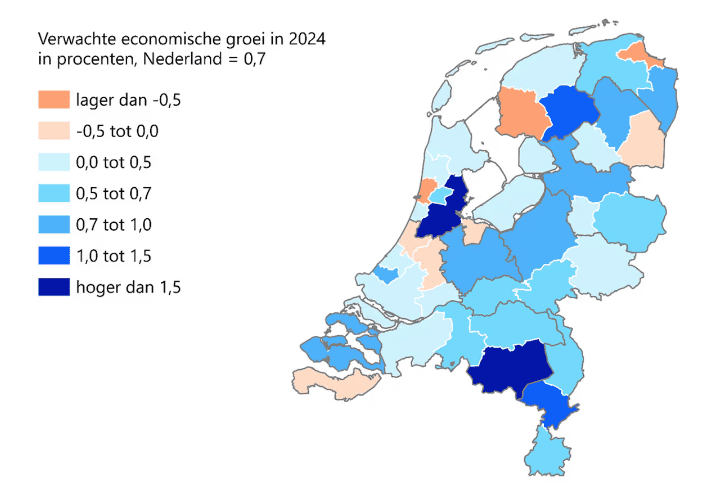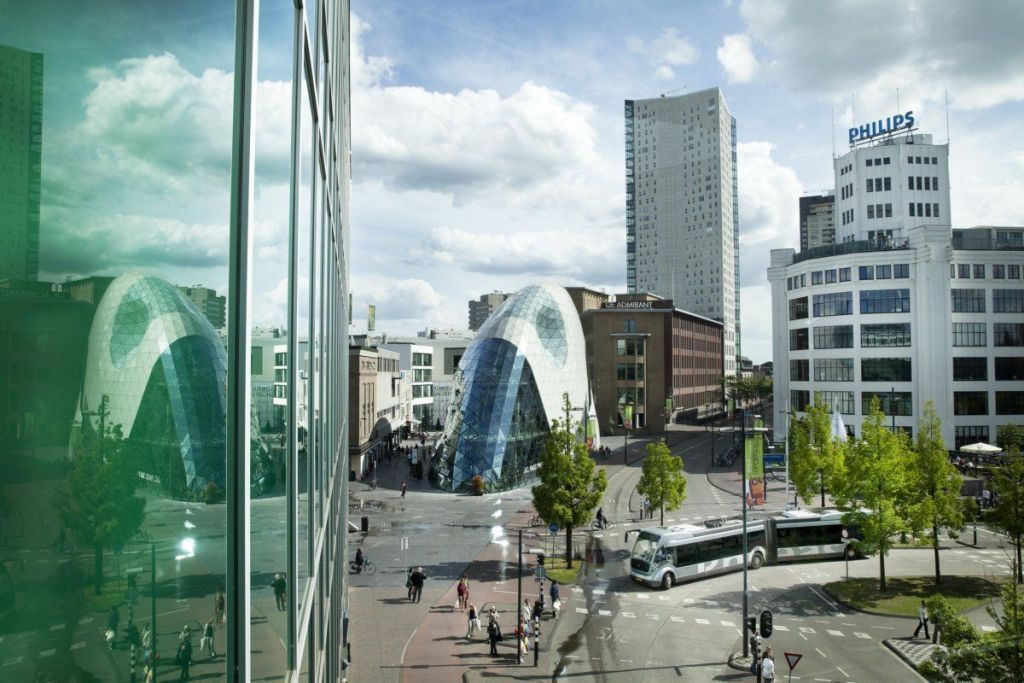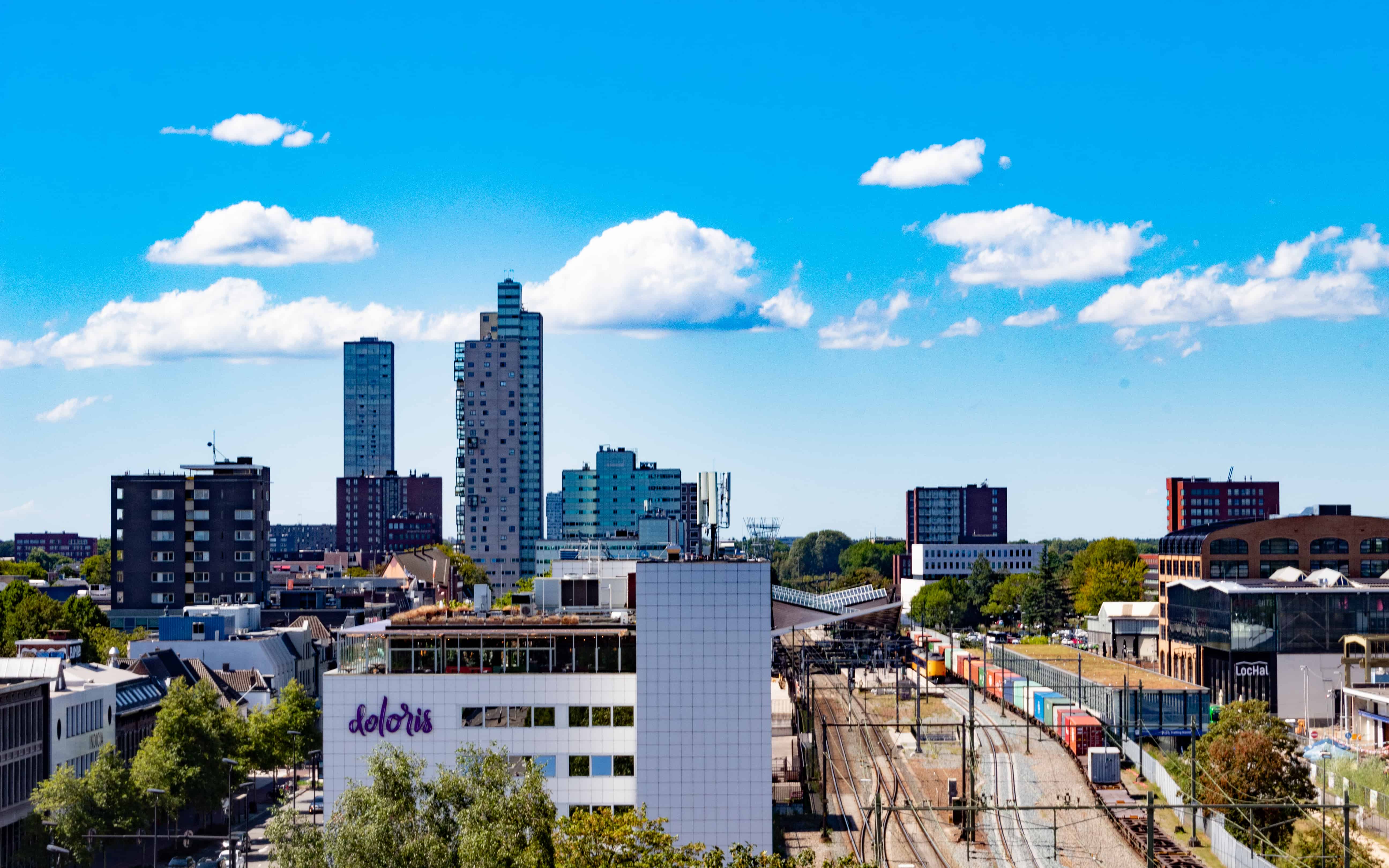
Differences among them are considerable, but most Dutch regions are expected to show growth in 2024. For 2024, Rabo Research expects the Dutch economy to grow by 0.7 percent and for 2025 growth of 1.2 percent is expected. “This outlook is slightly higher than what we anticipated at the end of last year,” said Rabo Research. Of the 40 Dutch regions, eight are still shrinking. Amsterdam and Eindhoven are growing the fastest.
As in the last quarter of 2023 (0.1% growth on average), household consumption is a significant driver of the expected growth in 2024. This is partly due to the beginning of the purchasing power recovery. Current high interest rates mean business investment is not expected to recover until the last quarter of 2024. “We anticipate that by then, interest rates will have fallen slightly again,” the researchers write. Companies, on the other hand, continue to struggle with a tight labor market. “Partly because of lagging business investment, we expect economic growth to be slightly lower than potential growth, given the available factors of labor production, capital, and productivity.”

The projected economic growth of 0.7 percent is not evenly distributed across sectors. On the contrary, growth expectations by industry vary widely. Rabo Research expects the highest economic growth in the healthcare sector. After a strong 2023, this sector is expected to grow by 3.7 percent in 2024. This growth can be traced to the rising demand for care due to an aging population and the expansion of treatment options. Growth in the healthcare sector favors all regions of the Netherlands but is driving most of the regions with a relatively large healthcare sector, such as East and Other Groningen and North Drenthe.
Solid growth of 2.8 percent is also expected in the agricultural sector this year, but this growth follows contraction in 2022 and 2023. Thus, this sector involves recovery growth. The Delft-Westland and Kop van Noord-Holland regions largely owe their positive outlook to growth in the agricultural sector. These regions are home to many (greenhouse) horticulture companies. The costs for this sector are expected to be lower in 2024 than in 2023 due to a combination of energy-saving measures and the drop in gas prices. In arable and livestock farming, the slight contraction of 2023 will continue this year. This is due in part to stricter environmental requirements and to buy-back schemes that a number of farms will make use of.
Greater Amsterdam and Brainport Eindhoven
Greater Amsterdam and Brainport Eindhoven are expected to increase their economic lead over other Dutch regions in 2024. The regions owe this outlook mainly to favorable regional conditions; companies in these regions are doing better here than comparable companies elsewhere in the country. For both regions, we expect the economy to grow by 1.8 percent. Still, that expectation is considerably lower than in 2021 and 2022, when both regions grew substantially faster.
Rabo Research also has a warning: “Although both regions have their own specialties, they are still partly dependent on one or a few major players in their region: airport Schiphol in Greater Amsterdam and high-tech company ASML in Brainport Eindhoven.”
Tide seems to have turned in Groningen
The Overig-Groningen region (which includes the city of Groningen) has been performing moderately economically in recent years: between 1995 and 2023, the regional economy barely grew. The cause of this contraction is the gradual reduction of gas production in the region. With the gas tap completely shut off since October 2023, mineral extraction figures are having less and less effect on the region’s economic figures, and it is time for a fresh start for Groningen. Growth of 0.6 percent is expected for the region in 2024. This forecast is mainly driven by the development of the healthcare sector, which is well-represented in this region.
The flag cannot go out everywhere
Whereas last year many regions were still experiencing economic contraction,this year this is the case for only eight regions: IJmond, Southwest Friesland, Delfzijl, Southeast Drenthe, East South Holland, and Zeeland Flanders. For the regions Het Gooi and Vechtstreek and Leiden and Bollenstreek, this contraction is only marginal.








